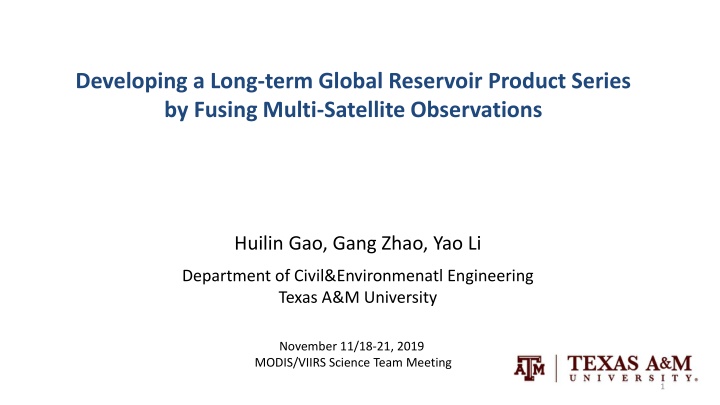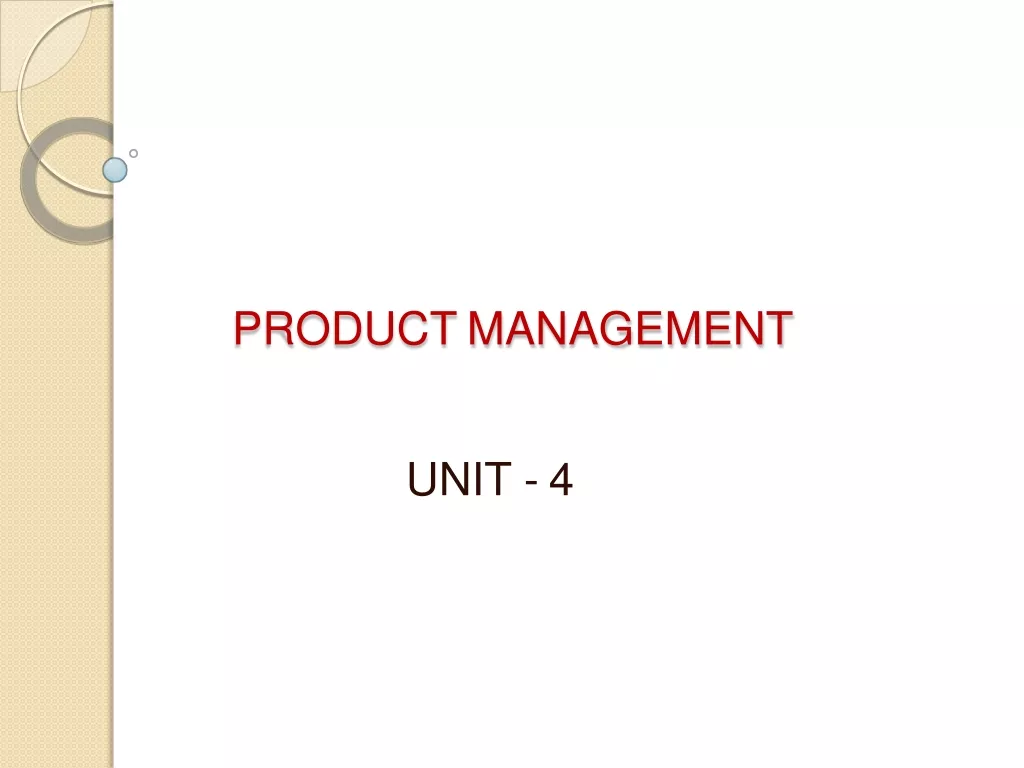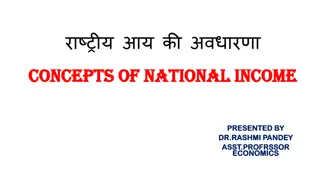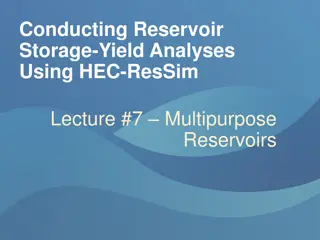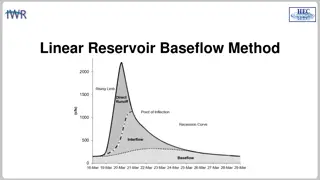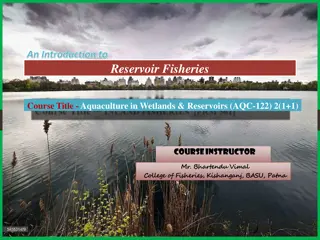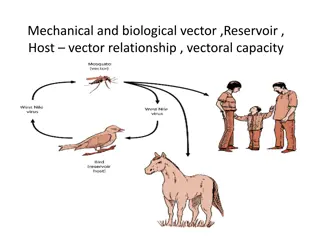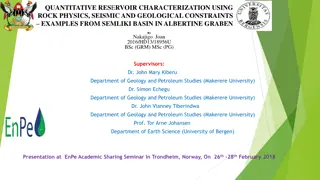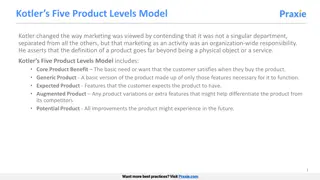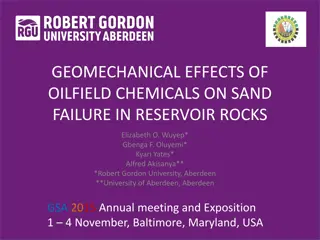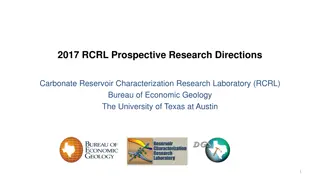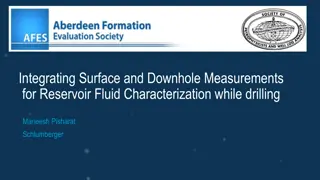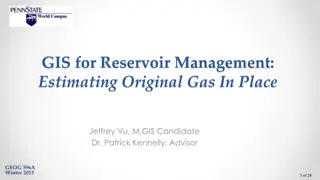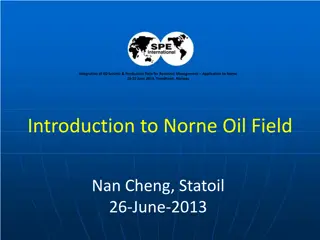Developing a Long-term Global Reservoir Product Series by Fusing Multi-Satellite Observations
This presentation discusses the development of a comprehensive global reservoir product series through the integration of multi-satellite observations. The focus is on leveraging MODIS/VIIRS data to improve our understanding of reservoir dynamics and water resource management on a global scale.
Download Presentation

Please find below an Image/Link to download the presentation.
The content on the website is provided AS IS for your information and personal use only. It may not be sold, licensed, or shared on other websites without obtaining consent from the author.If you encounter any issues during the download, it is possible that the publisher has removed the file from their server.
You are allowed to download the files provided on this website for personal or commercial use, subject to the condition that they are used lawfully. All files are the property of their respective owners.
The content on the website is provided AS IS for your information and personal use only. It may not be sold, licensed, or shared on other websites without obtaining consent from the author.
E N D
Presentation Transcript
Developing a Long-term Global Reservoir Product Series by Fusing Multi-Satellite Observations Huilin Gao, Gang Zhao, Yao Li Department of Civil&Environmenatl Engineering Texas A&M University November 11/18-21, 2019 MODIS/VIIRS Science Team Meeting 1
Global Reservoirs Global Reservoir and Dam (GRanD) Database Global capacity > 6200 km3 Lehner et al., 2011 Chao et al., 2008 1
Reservoir Storage vs. Reservoir Evaporation Evaporation > Industrial + Domestic ~265 km3 in 2010 Hydropower Irrigation/water supply Flood control Image result for recreation reservoir Recreation Lake Mead annual evaporation =791,000 acre-feet 2 https://www.flickr.com/photos/89241789@N00/172762894
Motivation FUTURE NEEDS. Uniform, coherent, and long-term measurements. Friedrich et al., 2017 BAMS 3
Objectives To generate a comprehensive, coherent, and long term global reservoir productseries at improved spatial coverage (and at improved temporal resolution) by combining MODIS/VIIRS observations with data from other satellite sensors. Develop a long term reservoir storage variation dataset under all- weather conditions. Generate a first long term record of the reservoir evaporation rate and the evaporation loss. Validate the reservoir product series and quantify the uncertainties associated with the datasets. 4
Reservoir Storage Variations Altimetry (Radar/Lidar) Elevation Storage variations A-E relationship MODIS/VIIRS Area Vo = Vc (Ac+Ao)(hc-ho)/2 A-E relationship at Lake Mead Sample number Satellite combination A-E relationship R2 Radar-MODIS (RM) y = 0.146x + 285.18 118 0.92 Radar-Landsat (RL) y = 0.158x + 280.57 58 0.96 ICESat-MODIS (IM) y = 0.152x + 281.33 14 0.91 ICESat-Landsat (IL) y = 0.199x + 263.15 10 0.99 5
Spatial Coverage of the Dataset 347 reservoirs (3123 km3 , 50% of global capacity) 60 km 4 km ICESat altimeter track Radar altimeter track 6
Algorithm for Bathymetry (A-E relationship) Data Landsat-based water classfications Surface Water Occurrence (SWO) from Global Surface Water (GSW) dataset (Pekel et al., 2016) Global Reservoir Surface Area Dataset (GRSAD) (Zhao and Gao, 2018) Stallite altimetry dataset ICESat/GLAS lidar altimetry dataset Global Reservoir and Lake Monitor (G-REALM) Hydroweb (Li et al., 2019) (Gao et al., 2012) 7
Bathymetry Results Derive A-E relationships 8
Validations of A-E & E-V Relationships A-E relationships E-V relationships 10 Li et al, RSE, in review.
Reservoir Evaporation Estimation Altimetry (Radar/Lidar) Elevation Storage variations Area-elevation curve MODIS/VIIRS Area Vo = Vc (Ac+Ao)(hc-ho)/2 Evaporation loss Evaporation rate MODIS LST, area + meteorology data Area X evaporation rate 13
Heat Storage Effect on the Evaporation Rate Heat storage effect: Heat storage effect: Spring and Summer Spring and Summer absorb heat Fall and Winter Fall and Winter release heat Jul Air Temperature ( F) absorb heat release heat Penman Equation ? =?(?? ?) + ??(?2) ?? ?? ??(? + ?) Sep Lake Tahoe 2014 Wind function Wind function Evaporation (inch) kPa C C- -1 1) ) ?: slope of the saturation vapor pressure curve ( : slope of the saturation vapor pressure curve (kPa ??: net radiation (MJ m : net radiation (MJ m- -2 2 d d- -1 1) ) ?: psychrometric constant ( : psychrometric constant (kPa ?(??): : wind function (s m wind function (s m- -1 1) ) ??: vapor pressure deficit ( : vapor pressure deficit (kPa ??: latent heat of vaporization (MJ kg : latent heat of vaporization (MJ kg- -1 1) ) kPa C C- -1 1) ) kPa) ) 14
Improving the Estimation of Reservoir Evaporation Rate ? ?2 = ??(2.33 + 1.65?2)? 0.1 (McJannet et al. 2012) Lake Tahoe Dynamic MODIS Area (Friedrich et al., 2017) (L) Zhao and Gao, RSE, 2019. 15
Improving the Estimation of Reservoir Evaporation Rate Lake Temperature Evaporation Model (LTEM) Translate MODIS LST to temperature profile & Calculate evaporation rate 16
Temperature Profile Validation Results Oneida Lake Lake Mendota Lake Mead Lake Ammersee Lake Biwa Good agreement for mixing depth and temperature seasonality Overall, long-term biases range from -0.5 C to 0.5 C Monthly value biases range from -5.4 C to 6.0 C 18
Evaporation Rate Validation Results Average R2 increase: 0.28 More improvement for deep lakes (e.g. Mead: 0.44) 19
Evaporation Results for Lake Nasser 20 Zhao and Gao, Estimating lake temperature profile and evaporation losses by leveraging MODIS LST data (in prep)
Summary By leveraging MODIS observations along with satellite altimetry data, the spatial and temporal coverage of remotely sensed global reservoirs can be significantly improved. High quality A-E relationship can be achieved using Landsat and altimetry data. By using MODIS LST to calculate the heat storage and considering fetch as a function of the dynamic lake area, reservoir evaporation rate can be better . Both the storage and evaporation algorithms have been validated using in situ data. Future work will focus on applying the algorithms to generate reservoir storage and evaporation product using both MODIS and VIIRS. Li et al., A high-resolution bathymetry dataset for global reservoirs using multi-source satellite imagery and altimetry, Remote Sensing of Environment, in review. Zhao and Gao, Estimating reservoir evaporation losses for the United States: Fusing remote sensing and modeling approaches, Remote Sensing of Environment, 226, 109-124, 2019. 21
